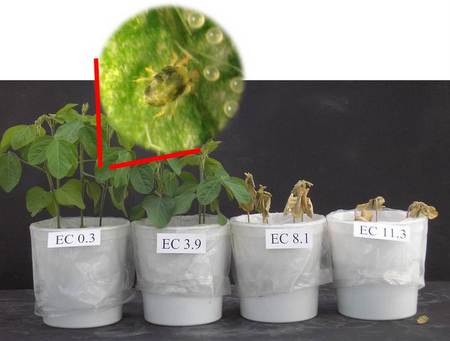|
|
|
|

|
Grassland Pollinators
Pollinators are a crucial part of healthy
ecosystems, but they are often challenged to the point that more species
are being considered threatened or endangered. This is particularly true in the remaining
grasslands of our region. It is
vital that we better understand these species and how management and
conservation can help protect their ecological services.
|
|
|
|
Published
work in this area:
Kral, KC, TJ Hovick, R Limb, JP Harmon. 2018. Multi-scale considerations for grassland
butterfly conservation in agroecosystems. Biological Conservation 226:196-204.
Kral, KC, T Hovick, R Limb, J Harmon. 2018. Improving our science: the evolution of butterfly sampling and
surveying methods over time. Journal
of Insect Conservation. 22:1-14.
Bendel, CR, TJ
Hovick, RF Limb, JP Harmon. 2018. Variation in
grazing management practices support diverse butterfly communities across
grassland working landscapes. Journal
of Insect Conservation 22:99-111.
Kral, KC, RF
Limb, JP Harmon, TJ Hovick. 2017. Arthropods and
fire: Previous research shaping future conservation. Rangeland Ecology & Management 70:589-598.
Solga, MJ, JP
Harmon, and AC Ganguli. 2014. Timing is
everything: An overview of phenological changes to plants and their
pollinators. Natural Areas Journal 34:227-234.
Harmon, JP, AC Ganguli, and M Solga. 2011.
An overview to pollination in rangelands: who, why, and how. Rangelands
33(3):4-8.
Ganguli, AC and
JP Harmon. 2011. An introduction to the special issue on pollinators. Rangelands
33(3):3.
|
|
|
 
|
Environmental Change and Ecological
Interactions
One of the most intriguing ecological
challenges is understanding how the environment shapes species while
predicting how those species and their interactions may change as their
environment changes. We have been using aphids and their interacting
species to study how biotic and abiotic factors interact. Biotic
factors include aphid interactions with the plants the aphids feed on, the
natural enemies that feed on the aphids, and the symbiotic bacteria within
the aphids. Abiotic factors include temperature, plant quality, UV,
and others.
|
|
|
|
Published work in this area:
Miller, CR, BT Barton, L Zhu, VC Radeloff,
KM Oliver, J Harmon, and AR Ives. 2017. Combined effects of night warming and
light pollution on predator-prey interactions. Proceedings of the Royal
Society B: Biological Sciences, 284, 20171195.
Speights CJ, JP Harmon, BT Barton. 2017. Contrasting the potential
effects of daytime versus nighttime warming on insects. Current Opinions in Insect Science 23:1-6.
Burdick, SC, DA Prischmann-Voldseth, and JP Harmon. 2015.
Density and distribution of soybean aphid, Aphis glycines Matsumura (Hemiptera: Aphididae) in response to
UV radiation. Population Ecology 57:457-466.
Whalen
R and JP Harmon. 2015. Temperature alters the interaction between a herbivore and a resistant host plant. Arthropod-Plant
Interactions 9:233-240.
Meisner MH, JP Harmon, and AR Ives.
2014. Temperature effects on long-term population dynamics in a
parasitoid-host system. Ecological Monographs 84:457-476.
Abbott,
KC, JP Harmon, and NS Fabina. 2014. The challenge
of predicting temperature effects on short-term predator-prey dynamics.
Population Ecology 56:375-392.
Harmon,
JP, BT Barton. 2013. On their best behavior: how animal behavior can help
determine the combined effects of species interactions and climate change. Annals
of the New York Academy of Sciences 1297:139-147.
Whalen,
R and JP Harmon. 2012. Rag1 aphid resistant soybeans alter the movement and
distribution of soybean aphid (Hemiptera: Aphididae). Environmental
Entomology 41:1426-1434.
Harmon, JP, NA Moran, and AR Ives. 2009. Species
response to environmental change: Impacts of food-web interactions and
evolution. Science 323:1347-1350.
|
|
|
|
|
|
|
|
|

|
Ecology and Behavior of Insect Pests
Insect pests are a constant concern to
North Dakota agriculture. Our goal has been to use insights from
"basic" ecological and behavioral studies to help us answer
"applied" questions about insect pests and the problems they
create. For example, the soybean aphid is the most costly insect pest in
soybean, but they can be incredibly frustrating because of tremendous
variation in when and where they are a problem.
Recently, we have been part of an
inter-disciplinary team interested in the “whole system” effects of soil
salinity, including how pest insects respond to salinity problems in
agroecosystems.
|
|
|
|
Published
work in this area:
Eichele-Nelson, J, T DeSutter, AF Wick, EL
Harmon, JP Harmon. 2018. Salinity improves performance and alters distribution
of soybean aphids. Environmental
Entomology 47:875-880.
Butcher K, AF Wick, T DeSutter, A Chatterjee, J
Harmon. 2018. Corn and soybean yield response to salinity influenced by
soil texture. Agronomy, Soils, and
Environmental Quality 110:1-11.
Harmon, JP and A Daigh.
2017. Attempting to predict the plant-mediated trophic effects of soil
salinity: a mechanistic approach to supplementing insufficient information.
Food Webs, 13, 67-79.
Eichele-Nelson JL, AF Wick, TM DeSutter, JP
Harmon. 2017. The effects of salinity on the herbivorous crop pest Tetranychus urticae (Trombidiformes: Tetranychidae)
on soybean and corn. Environmental
Entomology 46:839-846.
Eichele,
JL, J Dreyer, R Heinz, S Foster, DA Prischmann-Voldseth, JP Harmon. 2016
Soybean aphid response to their alarm pheromone E-β-Fernesene (EBF). Journal of Insect Behavior 29:385-394.
Butcher, K, AF Wick, T DeSutter,
A Chatterjee, J Harmon. 2016. Soil salinity: A threat to global food
security. Agronomy Journal
108:2189-2200.
Ganehiarachchi, GASM,
KM Anderson, JP Harmon, and MO Harris. 2013. Why oviposit there? Fitness consequences
of a gall midge choosing the plant's youngest leaf. Environmental
Entomology 42:123-130.
Ballman, ES, K
Ghising, DA Prischmann-Voldseth, and JP Harmon. 2012. Factors contributing
to the poor performance of a soybean aphid parasitoid (Hymenoptera:
Braconidae) on an herbivore resistant soybean cultivar. Environmental
Entomology 41:1417-1425.
Ghising, K. J. J. P. Harmon, P.
B. Beauzay, D. A. Prischmann-Voldseth, T. C.
Helms, P. J. Ode, and J. J. Knodel. 2012. Impact
of Rag1 aphid resistant soybeans on Binodoxys communis (Hymenoptera:
Braconidae), a parasitoid of soybean aphid (Hemiptera: Aphididae). Environmental
Entomology 41:282-288.
Werling, B. P.,
J. Harmon, C. Straub, C. Gratton. 2012. Influence
of native North American prairie grasses on predation of an insect
herbivore of potato. Biological Control 61:15-25.
|
|
|
|
|
|
|
|
|
|
|
|